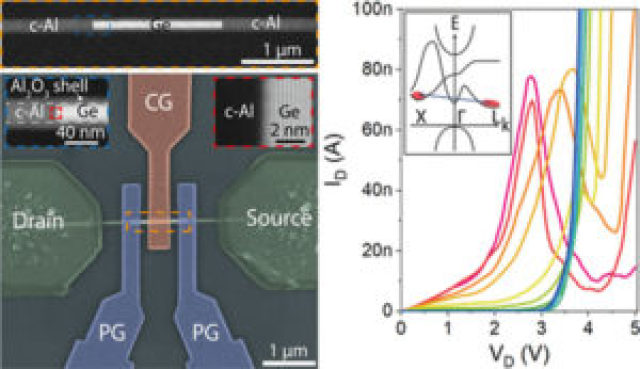A dynamically programmable transistor has been created, which alone can implement such multicomponent logic as NOR, NAND, etc. The developed transistor easily fits on the existing production infrastructure and does not use exotic materials. A special benefit from its use is expected in the field of artificial intelligence.
Scientists have presented a transistor that replaces entire logic circuits
A conventional transistor consists of two electrodes for a conductive channel and another electrode for controlling the channel (gate). The gate control allows you to pass current through the transistor or lock it. Almost all modern digital electronics are based on this principle. Researchers from the Vienna Technical University added two additional electrodes to the transistor structure and connected them with the thinnest thread of pure germanium. The special properties of germanium and the use of special software valve electrodes made it possible to create a prototype of a new component that can open a new era of chip technology.
Due to its electronic properties, germanium demonstrates the effect of negative differential resistance. This means that as the current increases in a certain area, the voltage ceases to increase and a dip is formed. The more current we supply on such a segment of the voltage characteristic, the lower the voltage, which can also be used to switch the device (signal).

This additional metal-germanium junction (aluminum is used as metal electrodes) allows programming the transistor for preset threshold switching voltages. We emphasize that this threshold can be dynamically set at a given level — this is actually programming the transistor for a series of sequential logical operations instead of a simple "on" or "off".
"Until now, the intelligence of electronics arose simply by connecting several transistors, each of which had only a rather primitive functionality. In the future, this intelligence can be transferred to the adaptability of the newest transistor, — said Professor Walter Weber - Arithmetic operations, which previously required 160 transistors, thanks to this increased adaptability will be possible with 24 transistors. Thus, the speed and energy efficiency of the circuits can also be significantly increased."
